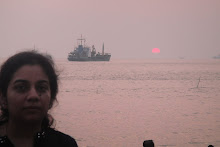
Title : Climate of Uncertainty
Author : William Stewart
ISBN : 978-0-9767291-6-7
Publisher : Ocean Publishing
XPosted on : BookPleasures
A book by William Stewart on global warming and changing weather conditions of our Earth, aiming to 'inform and not persuade'. The ongoing debate is presented in a capsule form and the issues which are being confronted by the humanity and all forms of life on earth.
The first part of the book talks about global warming, the conflicting views and the limitations of climate science, which is still in its infancy. The unresolved climatic challenges assume much more serious form given the fact that there are many secrets of nature and the ways things get manifested in our deeply connected environment that nothing could be decided about the course of action with perfect certainty. There is a brief mention of the presence of some unknown non-anthropogenic causes in the climate which have the capability to influence the environment to a great extent, some of which are - The degree of tilt of the earth on its axis, Earth's 'not the perfect circular motion' around sun and more sunspot activity making sun more active.
However, there is broad acceptance of the fact that we are heading towards much warmer future times and data and statistics prove that this is happening because of human meddling in the self-balancing capability of the planet. Human tampering in the form of accelerated release of GHGs - Greenhouse gases (mainly water vapor, carbon dioxide, methane, nirtous oxide and ozone) in the environment is much more than the levels that could be naturally absorbed by the nature through carbon sinks - like planktons in oceans and the rainforests.
The consequences of the increase in greenhouse gases are becoming visible in the form of more volcanic activities, aggressive ocean oscillations - providing more fuel for hurricanes, competing effects of greater cloud cover and reduced ice cover, greater temperature disparities - which will result in more rain and wind in some locations and less in others, changes in the pattern of migration of different species - modifying the ecological balance of the region from where they migrate and also the region to where they migrate.
These problems of global magnitude require global solutions. After having introduced the concepts and phenomena surrounding global warming, William Stewart moves on to bring the issues - social and political, that are impediments in the road to finding a solution
In the second part, the author talks about - the Peak Oil, which he calls as the 'evil twin' of global warming. Oil - which is the lifeblood of modern civilization and thanks to the excessive abuse of this natural resource by humans, we are about to face the depletion of the same not very far away in future. The depletion of these supplies will impact the emission levels of carbon even more significantly. This is because, in the absence of oil, we will eventually turn to higher carbon generating unconventional options like crude oil, oil shale and coal liquefication.
So given the situation, as the author puts it, we are left with following two options:
1 : Either use the unconventional means like coal and heavy crude as substitutes of oil and natural gas and put the Earth through devastating effects of global warming.
2 : Or get prepared for civil unrest of unforeseen magnitude as a result of dearth of energy - more people fighting for limited resources.
There are some sustainable technologies which are being researched by the think tank of our planet in an attempt to look for the substitutes of natural oil and gas : wind, geothermal, solar, clean coal, nuclear , tidal, wave and hydropower. But none of these come without their own baggage of issues which are unresolved and hence no dependable solution is in sight yet. That is the reason we are still continuing with the cutting of the same branch on which we are sitting.
Each of these energy substitutes have been very concisely presented in the book and how they can be used and how and what percentage of power is already being generated through these and also what downsides they bring with them.
But having seen and understood all this, a big question still looms large - have we already rolled our earth down the road to being a Venus or a Mars!!
In spite of the presence of plethora of books in this space, 'Climate of Uncertainty' does manage to bring its point sincerely in a comprehensive and readable fashion to make the common man understand the perils of changing climates. The scientific jargon and data are necessary but only for a limited group that uses the same for analysis and deductions. For the masses, the data goes unregistered, the processed form is what they look for and that is what 'Climate of Uncertainty' intends to provide.
An effort to bring a balanced assessment of the debate which is otherwise dominated by the extremes. And being a lawyer, William Stewart beautifully plays with words and phrases to stay clear of falling into any of the groups.
However, there could have been a little mention of some of the proposals that are being discussed in
 Title : The Laughing Onion
Title : The Laughing Onion












.png)








